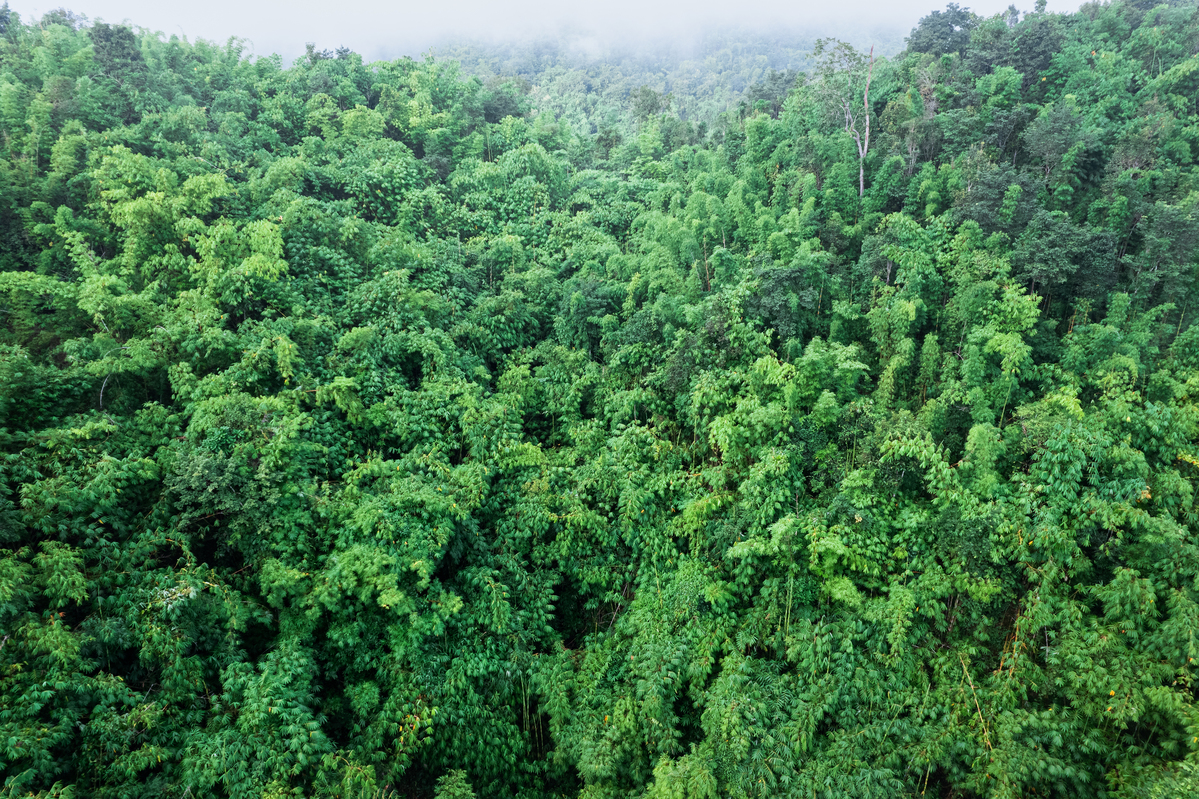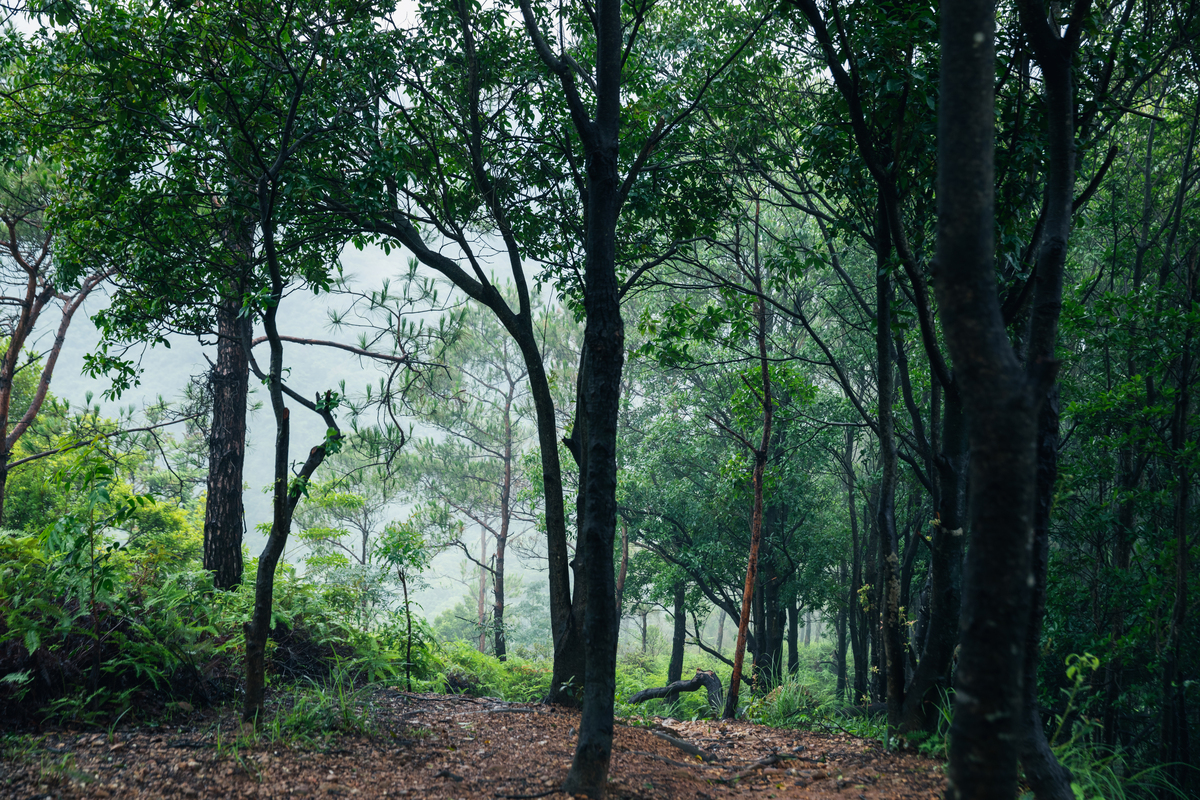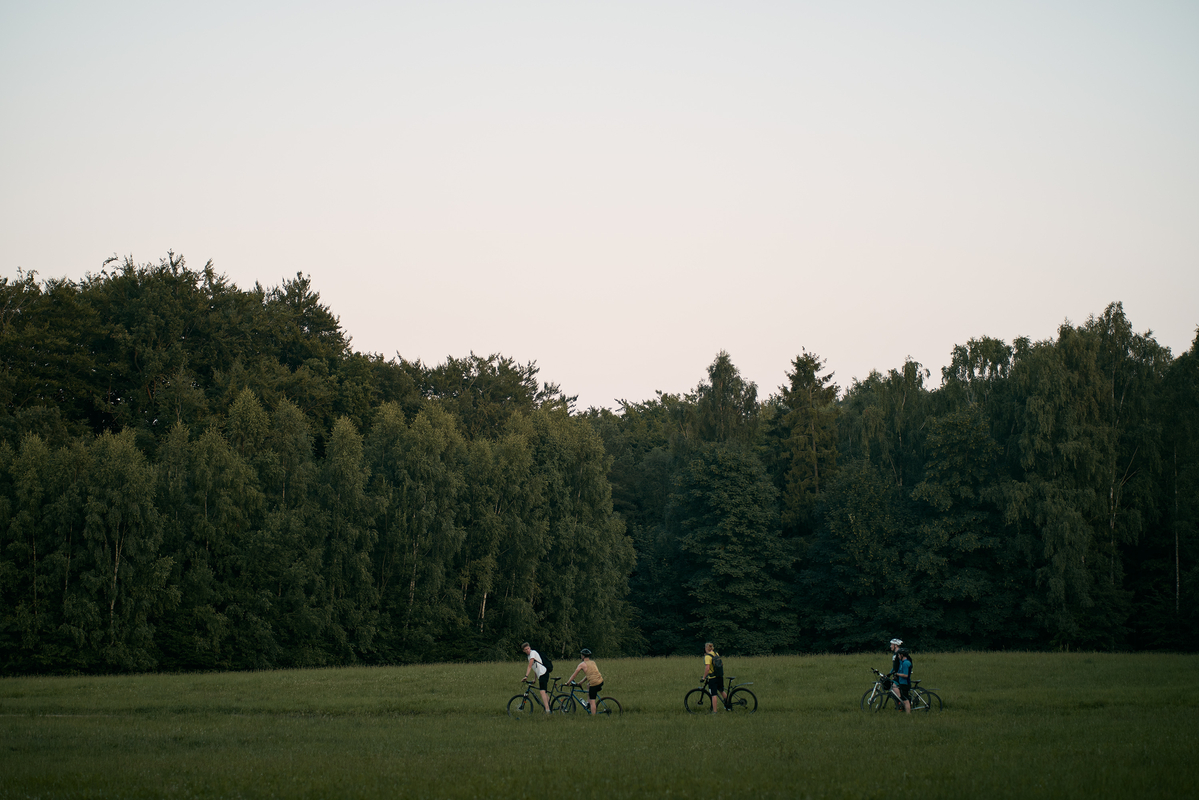August 24, 2025
Forest-Rich States of India: A 2025 Guide to the Greenest Regions
CM Content Team


View all
140+
Resorts
August 24, 2025
CM Content Team
Step into the green heart of India, where forest cover shapes landscapes, supports wildlife, and sustains communities. From Central India’s Sal forests to the cloud forests of the Northeast, these biodiverse regions are vital to forestry in India. Experience this beauty up close by staying at Club Mahindra forest resorts in places like Kanha and Maharashtra, where comfort meets the wild in the most memorable way.

Forest cover in India is classified into three key categories by the Forest Survey of India: Very Dense Forest, Moderately Dense Forest, and Open Forest. These classifications help in assessing the health, distribution, and conservation needs of forested regions.
According to the Forest Survey of India (FSI) 2023 report, India’s total forest cover is approximately 21.7 per cent of its geographical area. This includes a variety of forest types such as tropical rainforests, dry deciduous forests, and mangroves.
Forestry in India plays a critical role in maintaining ecological balance, conserving biodiversity, supporting rural and tribal livelihoods, and contributing to climate change mitigation through carbon sequestration.
Understanding how forest cover is measured and managed helps to appreciate the importance of preserving these natural assets for future generations.

India’s forest landscape is as diverse as its culture. While some states lead in total forest area, others stand out for the proportion of their land under green cover. Here’s a look at both:

Madhya Pradesh is one of the best states to experience forest cover in India in its raw, untamed form. Known as the Forest Capital of India, it is home to some of the country’s most celebrated national parks, including Kanha, Bandhavgarh, Pench, and Satpura. These parks are blanketed in Sal and bamboo forests, open meadows, and river systems that support a diverse range of wildlife like tigers, leopards, sloth bears, wild dogs, barasingha, and countless bird species.
Kanha National Park, in particular, gained global fame as the setting that inspired Rudyard Kipling’s The Jungle Book. Visitors can explore these wilderness zones through jeep safaris, nature trails, and birdwatching expeditions. Photography tours and tribal village experiences offer a deeper look into the forestry in India, where people and nature have coexisted for centuries. The forests of Madhya Pradesh offer a rich blend of biodiversity, culture, and conservation.
Stay at Club Mahindra Kanha or Club Mahindra Bundela Resort Bandhavgarh, two of the finest resorts in Madhya Pradesh. Surrounded by rich forest cover, these stays offer comfortable access to jungle safaris, tribal culture, and immersive wildlife experiences in the heart of India’s most iconic tiger reserves.
Chhattisgarh’s forests feel untouched and deeply rooted in tradition. The state’s green cover includes rich Sal and teak forests, which stretch across Bastar, Dhamtari, and the Kanger Valley. It is one of the few places where nature and indigenous life still coexist in harmony.
Kanger Valley National Park is the star attraction here, known for its dense canopy, limestone caves, underground springs, and the Tirathgarh waterfalls. Wildlife includes tigers, leopards, bears, and rare species like the Bastar Hill Myna. Barnawapara and Udanti Wildlife Sanctuaries are also known for peaceful, less-crowded safari experiences.
Cultural exploration goes hand in hand with nature here. Tribal art, markets, and local folklore are part of every journey through the forests. Treks, cycling, and nature photography are popular activities that let visitors absorb the essence of Chhattisgarh’s wilderness.
Odisha is a richly diverse state when it comes to forest cover in India, blending coastal mangroves, dense sal forests, and the rolling hills of the Eastern Ghats. Its forested regions are deeply intertwined with the lives of tribal communities who have preserved these ecosystems for generations, making Odisha a cultural and ecological gem in forestry in India.
Simlipal National Park, a designated tiger reserve and biosphere, stands out with its thick canopy, waterfalls like Barehipani and Joranda, and wildlife such as elephants, leopards, and antelopes. The Satkosia Tiger Reserve, carved by the Mahanadi River Gorge, is ideal for boat safaris and birdwatching. Additionally, Chilika Lake adds a coastal wetland dimension to Odisha’s biodiversity.
With wildlife safaris, tribal heritage trails, migratory birdwatching, and scenic treks, Odisha offers one of the most immersive forest experiences in India, rich in both nature and tradition.
Maharashtra stands out for its unique blend of landscapes, offering significant forest cover in India across two distinct zones. The Western Ghats, a UNESCO-recognised ecological hotspot, line the state’s western edge with lush, evergreen forests. In contrast, the central and eastern regions open into dry deciduous forests and active tiger corridors, contributing richly to forestry in India.
The Tadoba Andhari Tiger Reserve is Maharashtra’s oldest and most prominent wildlife sanctuary, known for regular sightings of tigers, leopards, sloth bears, marsh crocodiles, and wild dogs. In the Sahyadris, Bhimashankar Wildlife Sanctuary offers serene hikes and is home to the rare giant Indian squirrel. Koyna and Radhanagari Wildlife Sanctuaries, with their waterfalls and dense greenery, are perfect for monsoon treks and birdwatching.
Whether it's jeep safaris, canopy walks, or riverbank camping, Maharashtra's forests offer a diverse range of immersive and scenic nature experiences for every kind of traveller.
Stay at a variety of forest resorts in Maharashtra by Club Mahindra, including Tungi Lonavala, Saj Mahabaleshwar, Hatgad, Forest Escape Koyna, and Riverside County Resort Amba Ghat to enjoy tranquil forest settings with all the comforts of a premium getaway.
Mizoram ranks highest in the percentage of forest cover in India, with more than 84 per cent of its land draped in lush greenery. The forests here are a vibrant mix of tropical evergreen and moist deciduous types, dominated by bamboo, canes, and hardwood trees.
The state’s largest protected area, Dampa Tiger Reserve, shelters leopards, Himalayan black bears, and a wide variety of bird species. The forested hills and valleys of Mizoram are ideal for nature walks, butterfly trails, and immersive treks through remote tribal areas.
Many sacred groves in Mizoram are protected by local communities and play a vital role in preserving biodiversity. With strong community-led conservation and serene landscapes, Mizoram is a shining example of sustainable forestry in India, perfect for travellers seeking solitude and untouched wilderness.
Arunachal Pradesh features one of the most expansive and biologically rich forest covers in India, with over 79 per cent of its land cloaked in dense greenery. Its diverse terrain ranges from lowland tropical forests to alpine meadows, making it a sanctuary for rare and endangered species.
Namdapha National Park, located near the Myanmar border, is a vital ecological zone and the only park in India that is home to all four big cats (tiger, leopard, clouded leopard, and snow leopard). Pakke Tiger Reserve is another forest jewel, famous for its thriving population of hornbills and elephants.
Travellers can enjoy forest treks, birdwatching, and river rafting, alongside cultural exchanges with indigenous tribes. Arunachal Pradesh is a leading example of sustainable forestry in India and a rewarding destination for eco-conscious exploration.
Meghalaya is home to some of the most enchanting cloud forests in India, with over 76 per cent of its land under forest cover. These forests are rich in sacred groves, protected for centuries by Khasi, Garo, and Jaintia tribes, and known for their ecological and spiritual importance.
The state’s natural beauty is reflected in places like Nongkhyllem Wildlife Sanctuary and Balpakram National Park, where one can spot elephants, hoolock gibbons, leopards, and hornbills. The terrain is also famous for its underground caves, waterfalls, and forest trails.
Trekking to living root bridges in Cherrapunji and Mawlynnong offers a surreal walk through dense greenery. With butterfly watching, cultural tours, and deep respect for the land, Meghalaya blends nature and tradition seamlessly, showcasing how forest cover in India thrives when protected by indigenous wisdom.
When it comes to embracing the wild without giving up on comfort, Club Mahindra resorts offer a perfect mix of nature and elegance. For those seeking immersive forest experiences, Club Mahindra Kanha is a top choice among resorts in Madhya Pradesh, placing you right in the heart of tiger country. In the Western Ghats, scenic forest getaways await at Club Mahindra Tungi Lonavala, Saj Mahabaleshwar, Hatgad, Forest Escape Koyna, and Riverside County Resort Amba Ghat are some of the most serene resorts in Maharashtra.
For wildlife lovers, Club Mahindra Gir stands out among resorts in Gujarat, offering access to the Asiatic lion’s habitat. Club Mahindra Hotel Tiger Kingdom in Sawai Madhopur is one of the most exciting resorts in Rajasthan near Ranthambore. Down south, Club Mahindra Thekkady is a peaceful retreat amid Kerala’s evergreen forests and a highlight among resorts in Kerala. All these properties are perfect for safaris, forest walks, birdwatching, and cultural immersion in India’s most biodiverse regions.
India’s forest-rich states are not only ecological treasures but also living legacies of harmony between nature and people. Exploring them mindfully supports conservation and deepens our connection to the planet. For unforgettable stays in these green havens, consider a Club Mahindra Membership and enjoy exclusive access to some of the finest forest resorts in India.
Madhya Pradesh has the largest forest cover in India by area, with over 77,000 sq. km of forested land.
Mizoram leads with more than 84 per cent of its geographical area under forest cover.
The Forest Survey of India (FSI) publishes updated forest statistics every two years, offering detailed forest cover in India state-wise.
India hosts tropical rainforests, deciduous forests, alpine forests, mangroves, and montane forests.
Forestry in India supports biodiversity, stores carbon, regulates water cycles, and provides livelihoods to forest-dwelling communities.
Popular forest resorts in India include Club Mahindra Kanha, Club Mahindra Tungi Lonavala, Club Mahindra Gir, Club Mahindra Thekkady, and Club Mahindra Hotel Tiger Kingdom Sawai Madhopur, among others.
Mahindra Holidays & Resorts India Ltd. (MHRIL), a part of Leisure and Hospitality sector of the Mahindra Group, offers quality family holidays primarily through vacation ownership memberships and brings to the industry values such as reliability, trust and customer satisfaction. Started in 1996, the company's flagship brand ‘Club Mahindra’, today has over 300,000 members , who can holiday at 140+ resorts in India and abroad.
We use cookies to personalise content and to provide you with an improved user experience.By Continuing to browse this site you consent to the use of cookies.Please visit our cookie policy for further details.

Welcome to ClubMahindra.com In order to provide a personalised experience for you, we use cookies to enable some website functionality. Cookies help us see which articles most interest you; allow you to easily share articles on social media channels; permit us to deliver content personalised to your interests and locations; along with many other site benefits. For more information, please review our Cookie Policy
When you visit any website, it may store or retrieve information on your browser, mostly in the form of cookies. This information might be about you, your preferences or your device and is mostly used to make the site work as you expect it to. The information does not usually directly identify you, but it can give you a more personalized web experience. Because we respect your right to privacy, you can choose not to allow some types of cookies. Click on the different category headings to find out more and change our default settings. However, blocking some types of cookies may impact your experience of the site and the services we are able to offer.
Because we respect your right to privacy, you can choose not to allow some types of cookies and you have the right to withdraw your consent by send a mail to email id [email protected]
These cookies are essential in order to enable you to move around the site and use its features, such as accessing secure areas of the site. Without these cookies, services you have asked for cannot be provided.
These cookies allow us to employ data analytics so we can measure and improve the performance of our site and provide more relevant content to you. These cookies don't collect information that identifies a visitor down to an individual level that is available to us. These cookies are not passing personally identifiable information to any external third party other than in limited cases when we engage a service provider to act on our behalf but who is then unable to use the data for their own purposes.
Performance cookies are generally third-party cookies from vendors we work with or who work on our behalf that collect information about your visit and use of the Club Mahindra website, for instance which pages you visit the most often, and if you get error messages from web pages. These cookies don't collect information that identifies a visitor. All information these cookies collect is anonymous and is only used to improve your overall experience on how the website works. Third party vendors may have access to this data and may use it to improve their overall services and offerings.
Functionality cookies allow a site to remember choices you make (such as your user name, language or the region you are in) and provide more enhanced, personal features. These cookies cannot track your browsing activity on other websites. They don't gather any information about you that could be used for advertising or remembering where you've been on the Internet outside our site.
Third-party advertising and social media cookies are used to (1) deliver advertisements more relevant to you and your interests; (2) limit the number of times you see an advertisement; (3) help measure the effectiveness of the advertising campaign; and (4) understand people's behaviour after they view an advertisement. They are usually placed on behalf of advertising networks with the site operator's permission. They remember that you have visited a site and quite often they will be linked to site functionality provided by the other organization. This may impact the content and messages you see on other websites you visit. If you do not allow these cookies you may not be able to use or see certain these sharing tools content on our website.